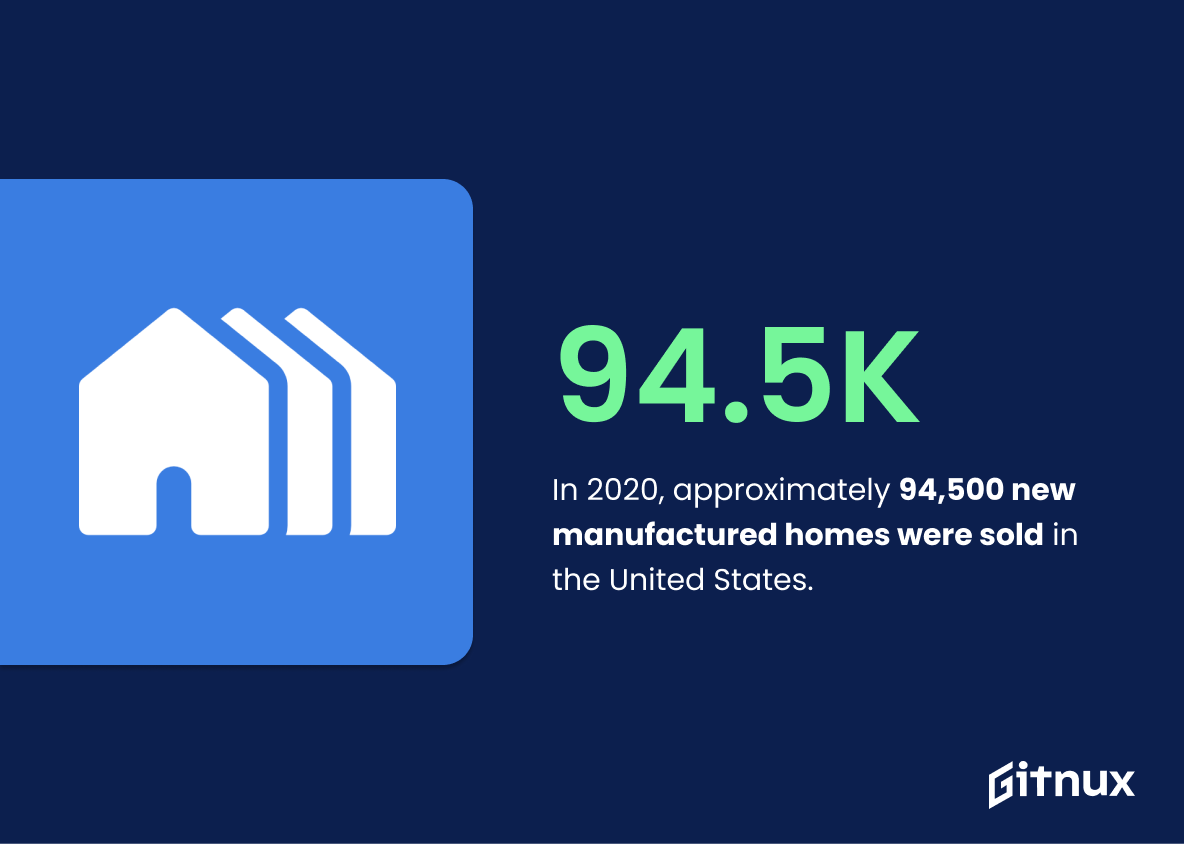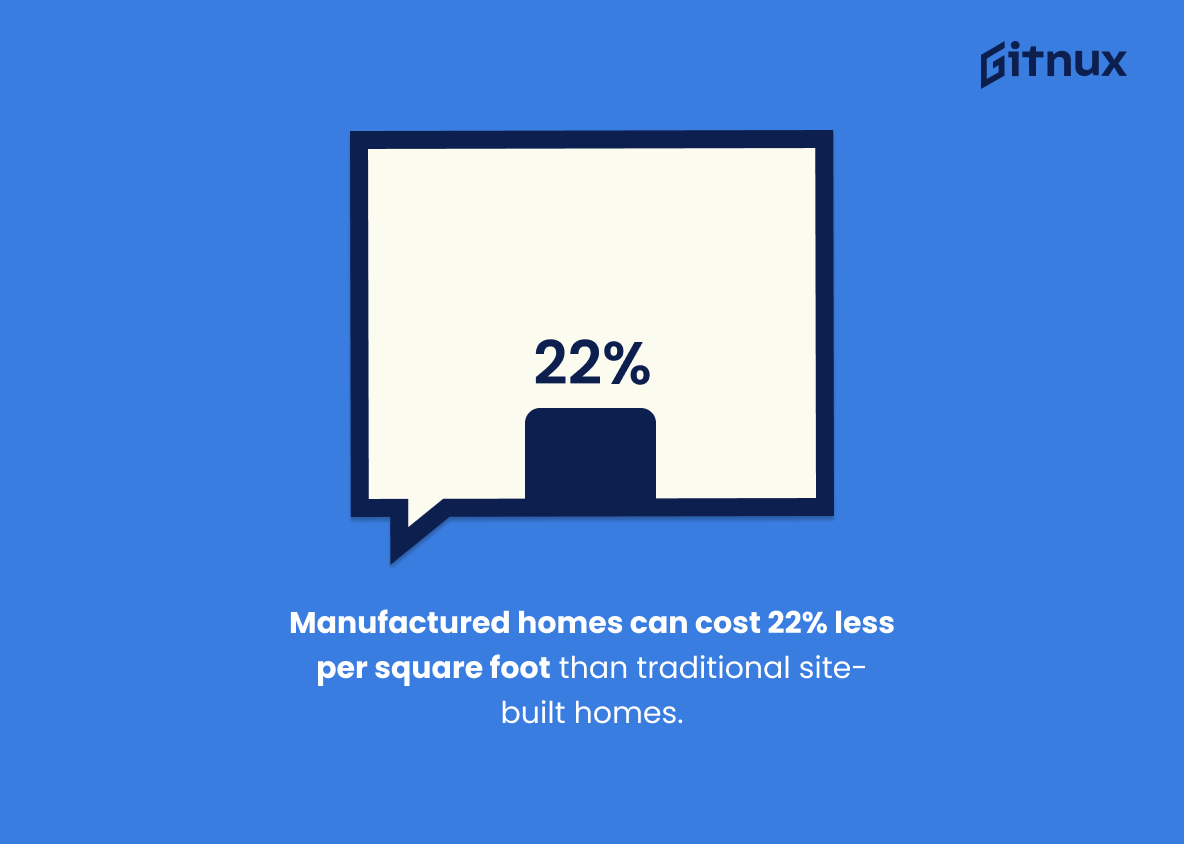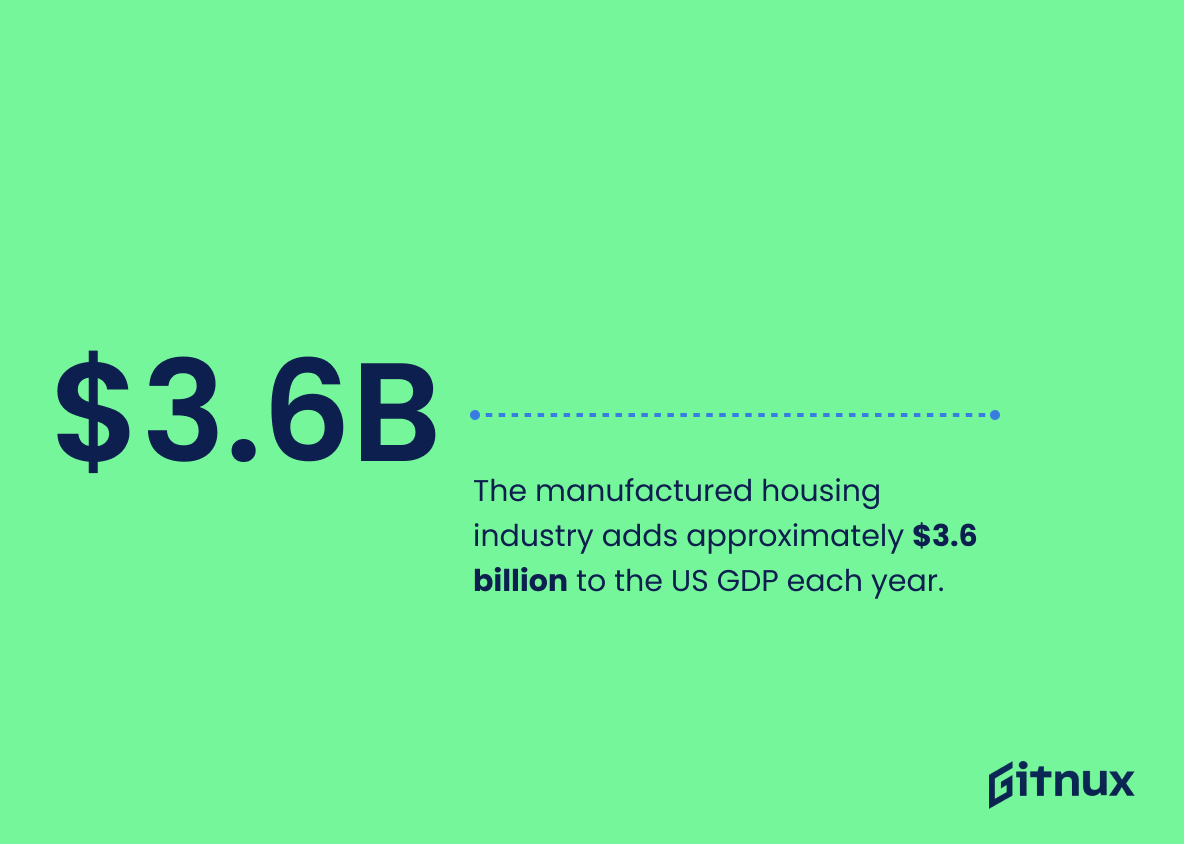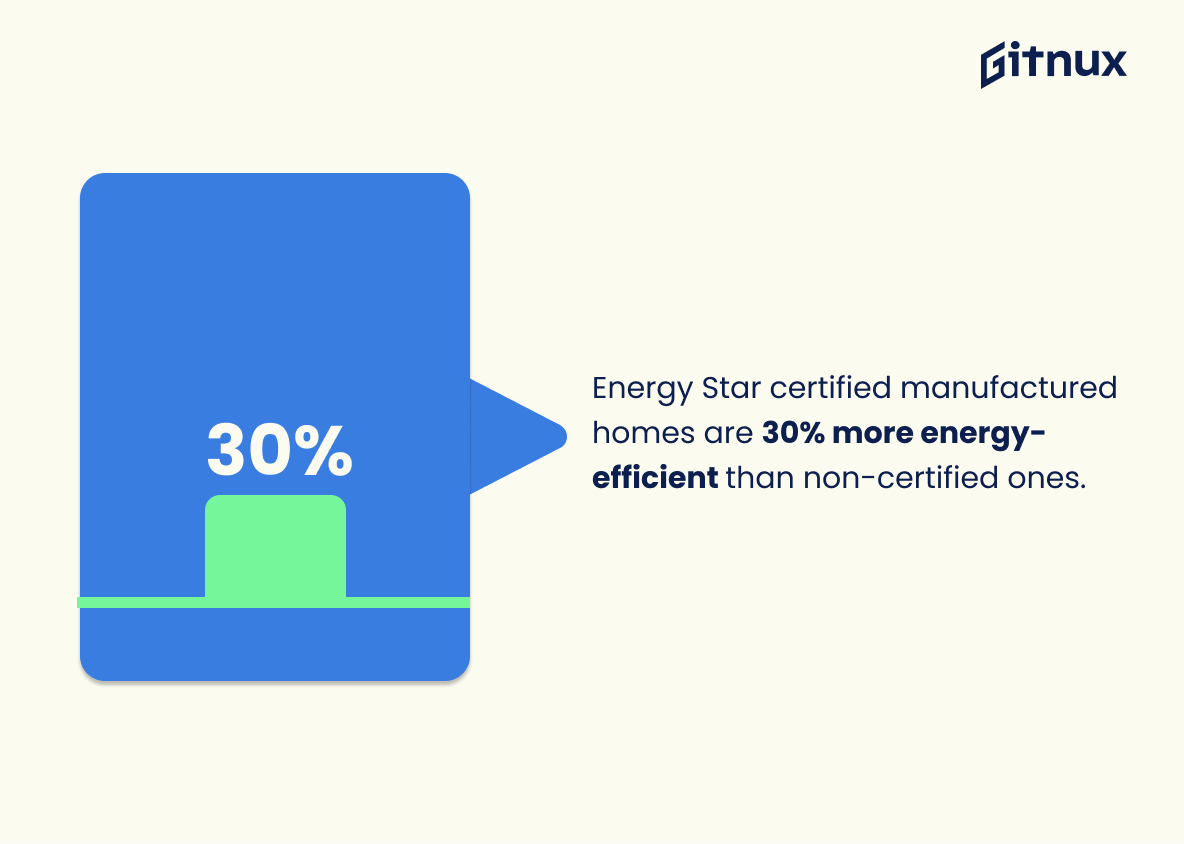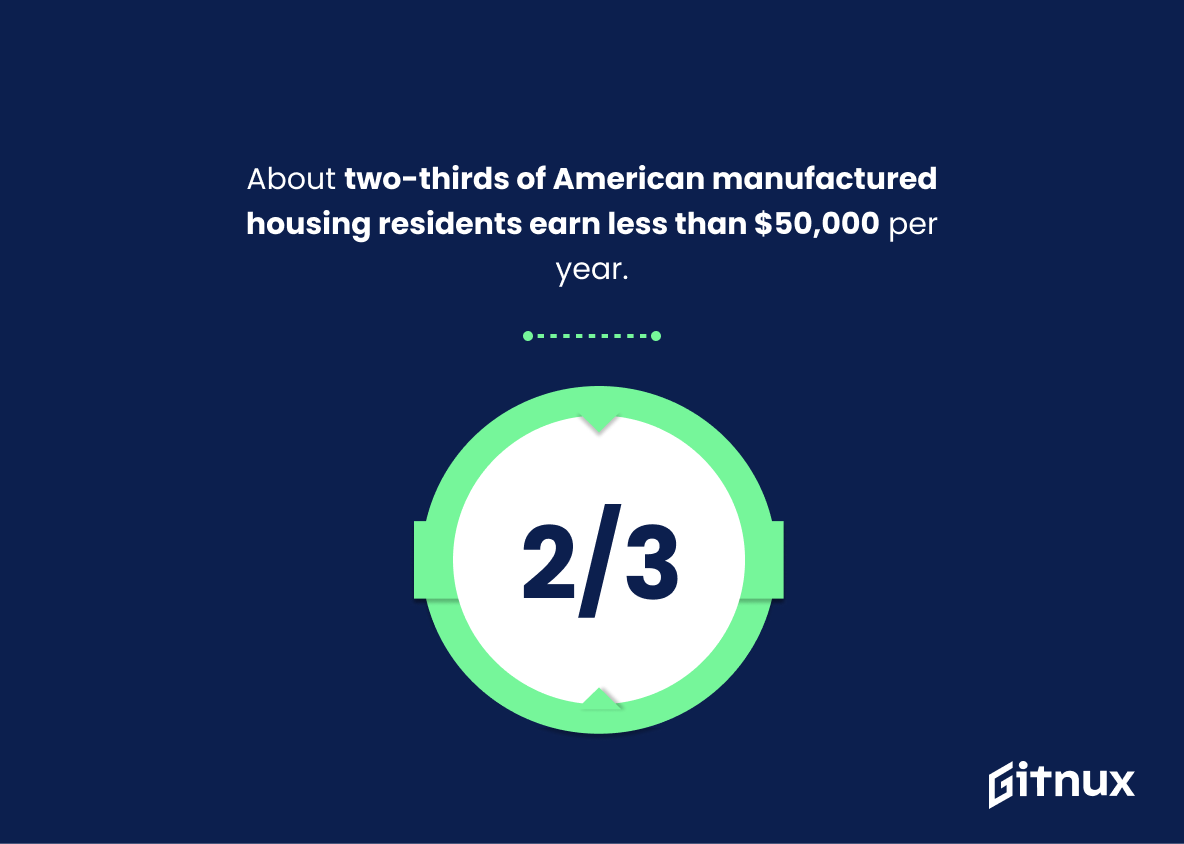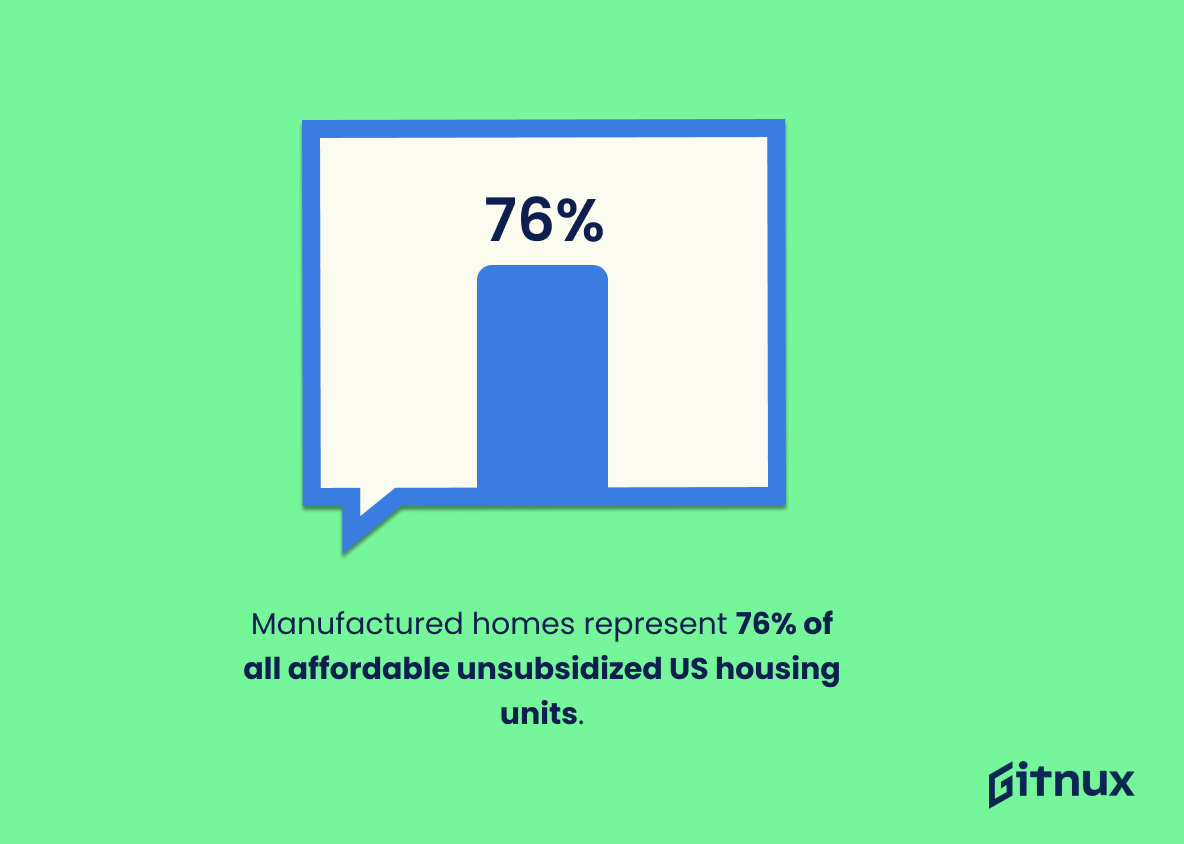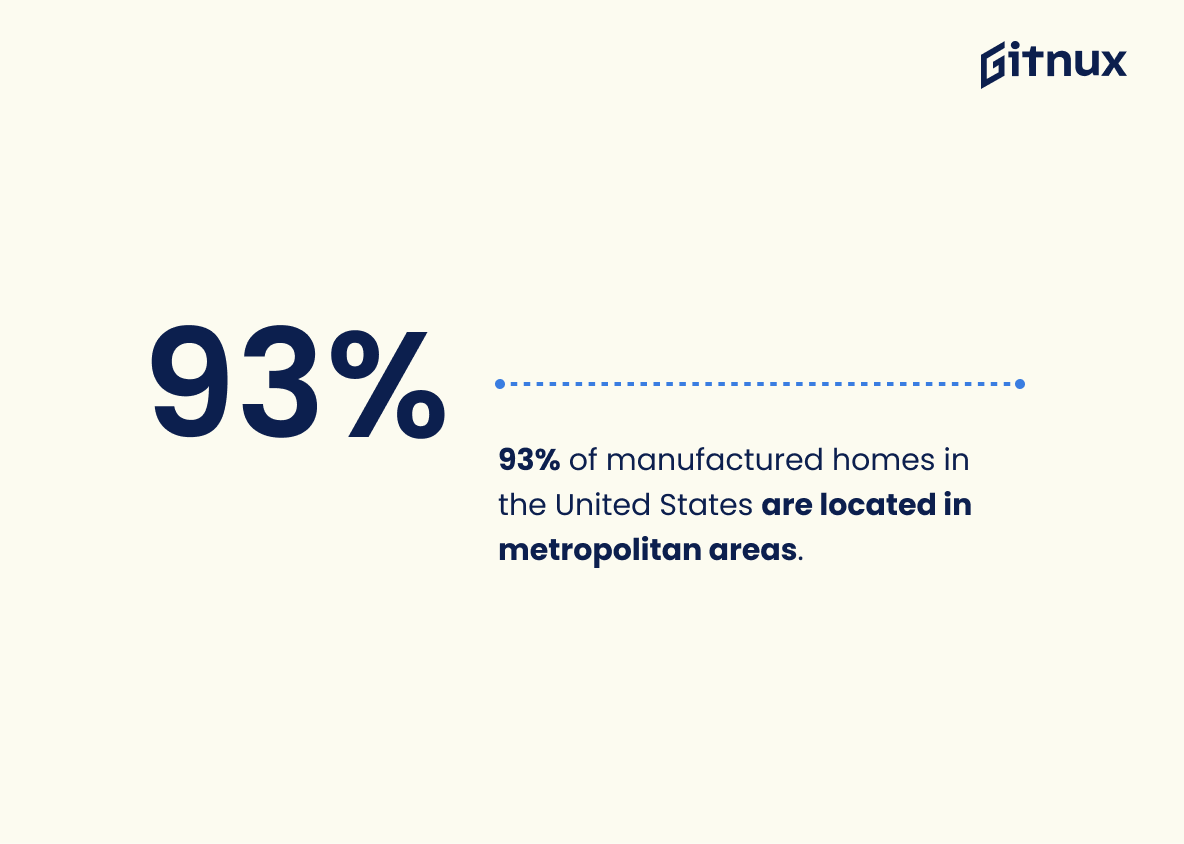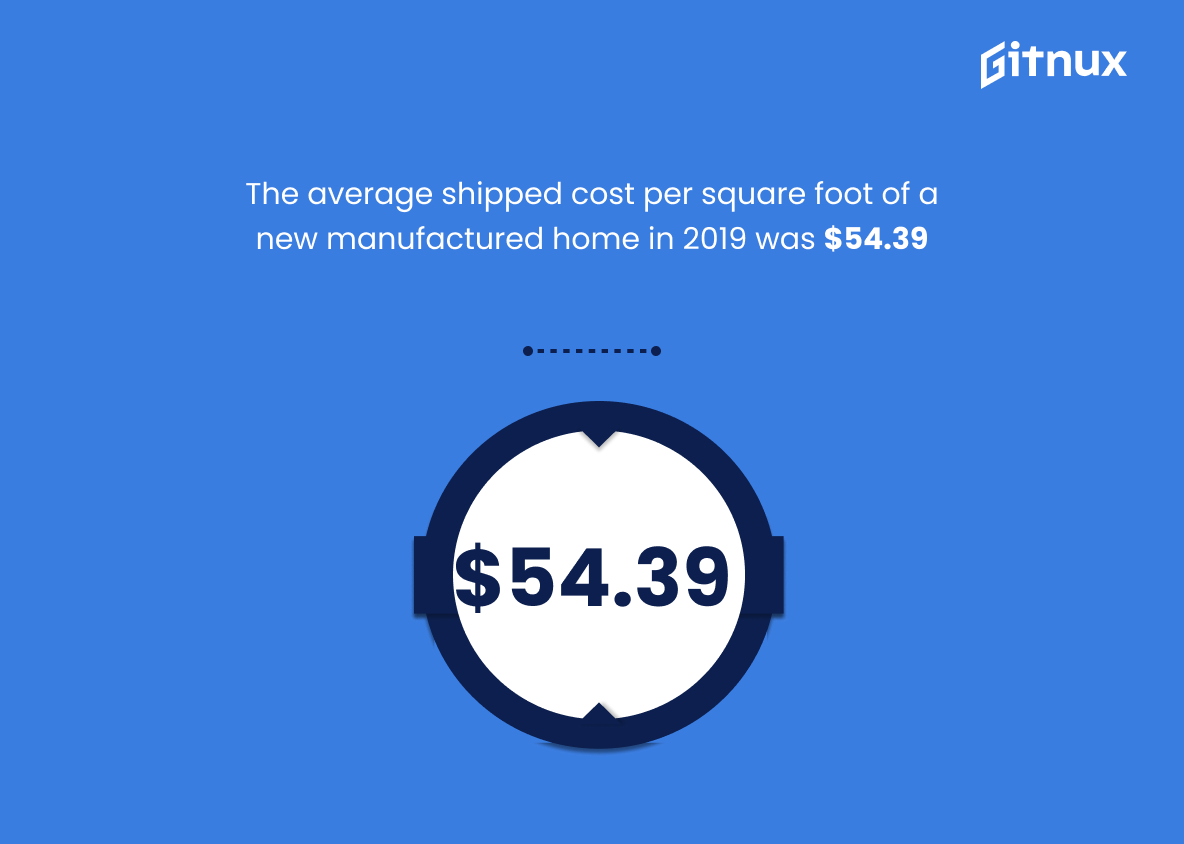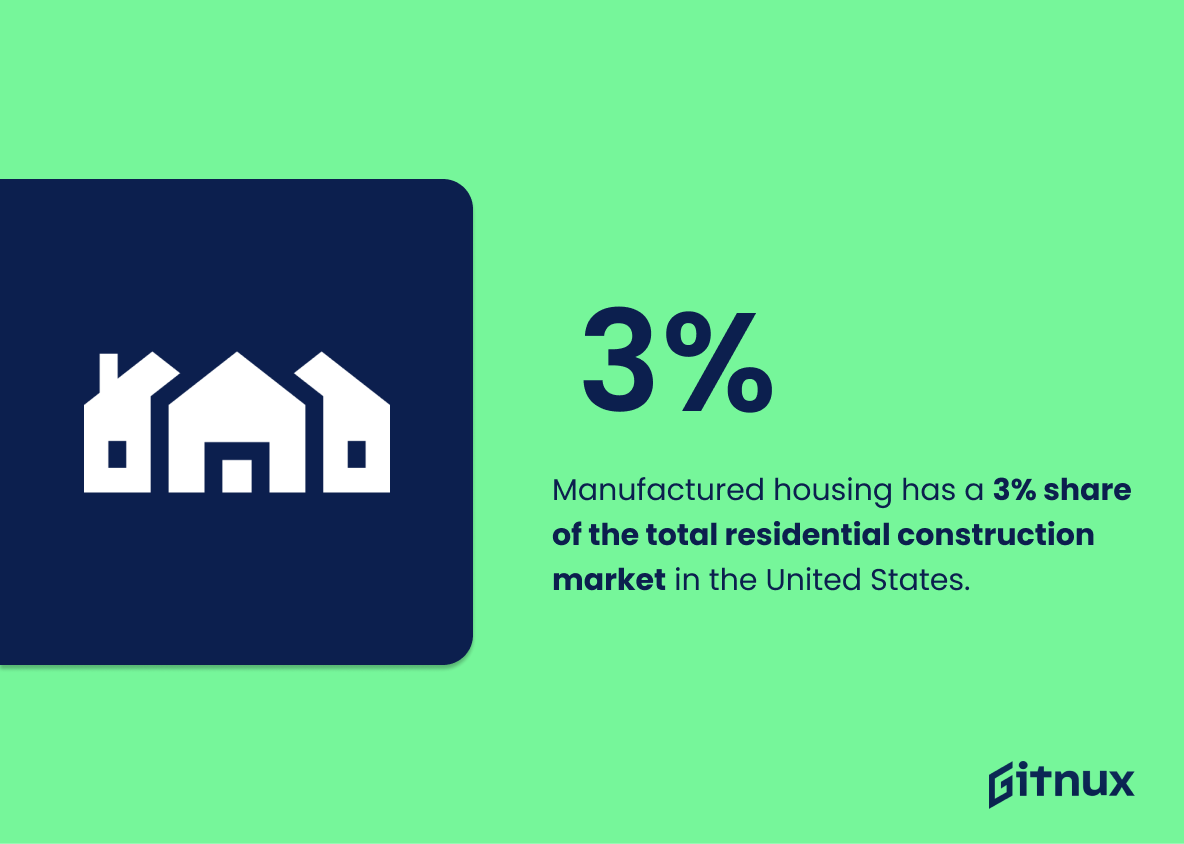Manufactured housing is an important part of the US housing market, accounting for 9.8% of all occupied units and contributing around $3.6 billion to the country’s GDP annually. This blog post will explore some key statistics about manufactured homes in the United States, including their cost compared to traditional site-built homes, production numbers, energy efficiency ratings, home ownership rates among residents and more.
Manufactured Housing Statistics Overview
In 2020, approximately 94,500 new manufactured homes were sold in the United States.
This statistic is a telling indication of the current state of the manufactured housing industry in the United States. It shows that despite the economic downturn caused by the pandemic, the industry is still thriving and providing much-needed housing solutions to many Americans. This statistic is a testament to the resilience of the manufactured housing industry and its ability to adapt to changing market conditions.
Manufactured homes can cost 22% less per square foot than traditional site-built homes.
This statistic is a powerful reminder of the affordability of manufactured homes compared to traditional site-built homes. It highlights the fact that manufactured homes can provide a cost-effective housing option for those looking to purchase a home. This is especially important for those who may not have the financial means to purchase a more expensive site-built home.
The manufactured housing industry contributes around $3.6 billion to the United States’ GDP annually.
This statistic is a testament to the immense economic impact of the manufactured housing industry in the United States. It highlights the importance of this sector in the nation’s economy, and serves as a reminder of the vital role it plays in providing affordable housing solutions to millions of Americans.
Energy Star certified manufactured homes can be up to 30% more energy-efficient than other manufactured homes.
This statistic is a powerful reminder of the potential savings that can be achieved by investing in Energy Star certified manufactured homes. Not only can homeowners save money on their energy bills, but they can also reduce their environmental impact by reducing their carbon footprint. This statistic is a great example of how manufactured housing can be a sustainable and cost-effective option for those looking for a new home.
About two-thirds of American manufactured housing residents earn less than $50,000 per year.
This statistic is a stark reminder of the financial realities faced by many American manufactured housing residents. It highlights the fact that a large portion of the population is living on a limited income, and may not have the resources to access the same housing opportunities as those with higher incomes. This statistic is a call to action to ensure that all Americans have access to safe, affordable housing.
The top three states with the highest number of manufactured homes are Florida, Texas, and California.
This statistic is significant in the context of manufactured housing statistics because it reveals the states that have the highest concentration of manufactured homes. This information can be used to identify areas where manufactured housing is most popular, as well as to identify potential markets for manufactured housing businesses. Additionally, this statistic can be used to compare the prevalence of manufactured housing in different states, providing insight into the overall market for manufactured housing.
Manufactured homes represent 76% of all affordable unsubsidized US housing units.
This statistic is a powerful indicator of the importance of manufactured homes in providing affordable housing in the United States. It highlights the fact that manufactured homes are a major source of housing for those who cannot afford traditional housing options. This statistic is a reminder that manufactured homes are an important part of the housing landscape and should not be overlooked when considering housing options.
93% of manufactured homes in the United States are located in metropolitan areas.
This statistic is significant in the context of manufactured housing statistics because it highlights the prevalence of manufactured homes in metropolitan areas. It demonstrates that manufactured homes are a popular choice for those living in cities, and that they are a viable option for urban dwellers. This statistic also speaks to the affordability of manufactured homes, as they are often more affordable than traditional homes in metropolitan areas. Furthermore, this statistic shows that manufactured homes are a viable option for those looking for a home in a metropolitan area.
The average size of a new single-section manufactured home is 1,025 square feet.
This statistic is an important indicator of the current state of manufactured housing. It provides insight into the average size of new single-section manufactured homes, which can be used to compare with other types of housing and to determine the average size of a manufactured home. This information can be used to inform decisions about the size of manufactured homes that are being built, as well as to provide a benchmark for the industry.
The average shipped cost per square foot of a new manufactured home in 2019 was $54.39.
This statistic is a valuable insight into the cost of manufactured housing in 2019, providing readers with a clear indication of the average cost per square foot. It is an important piece of information for anyone considering purchasing a manufactured home, as it gives them an idea of what to expect in terms of cost. Additionally, it can be used to compare the cost of manufactured housing to other types of housing, such as traditional homes, to get a better understanding of the cost differences.
Manufactured housing has a 3% share of the total residential construction market in the United States.
This statistic is a telling indication of the impact manufactured housing has had on the residential construction market in the United States. It demonstrates that despite its relatively small share of the market, manufactured housing has still managed to make a significant impact. This statistic is an important reminder of the importance of manufactured housing in the residential construction industry.
Conclusion
Manufactured housing is an important part of the US housing market, accounting for 9.8% of all occupied units and contributing around $3.6 billion to the country’s GDP annually. On average, manufactured homes cost 22% less per square foot than traditional site-built homes and can be up to 30% more energy efficient when certified by Energy Star. In 2020, approximately 94,500 new manufactured homes were sold in the United States at a national average price of $75,000 each.
There are over 50,000 manufactured home communities across America with 17 million people living in them; two thirds earning less than $50k per year on average while 67%, higher than the overall homeownership rate for all types of housing (64%), own their home outright or have a mortgage loan secured against it. Manufactured housing production increased 14.3% from October 2020 to October 2021 and has 3% share of total residential construction market in US today – making it an attractive option for those looking for affordable yet quality built dwellings that meet modern standards without breaking bank balance.
References
0. – https://www.prosperitynow.org
1. – https://www.mckinsey.com
2. – https://www.energystar.gov
3. – https://www.fred.stlouisfed.org
4. – https://www.propertyshark.com
5. – https://www.freddiemac.com
6. – https://www.hudgis-hud.opendata.arcgis.com
7. – https://www.census.gov
8. – https://www.carolinahomemortgage.com
9. – https://www.familyhomeplans.com
10. – https://www.bizjournals.com
11. – https://www.manufacturedhousing.org
